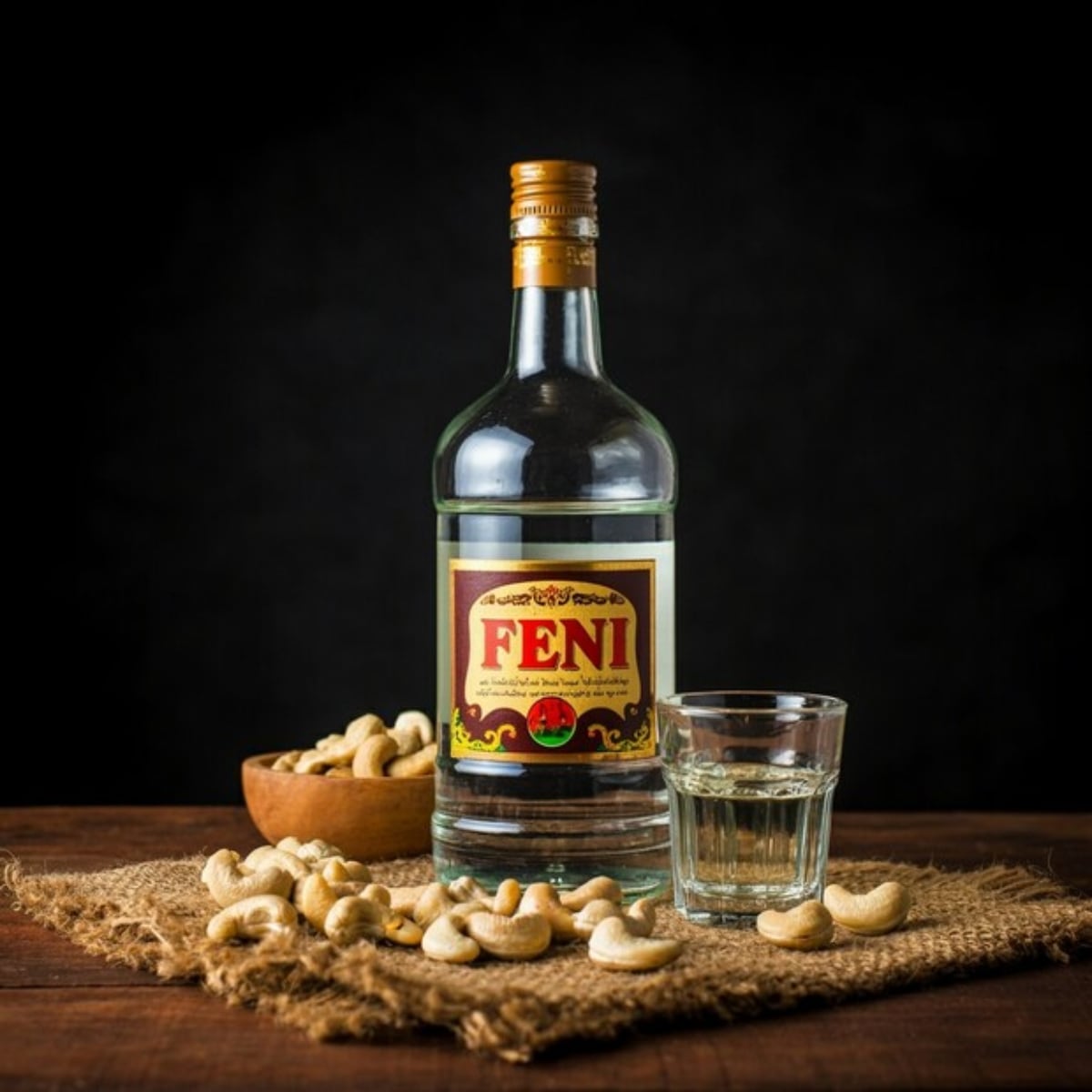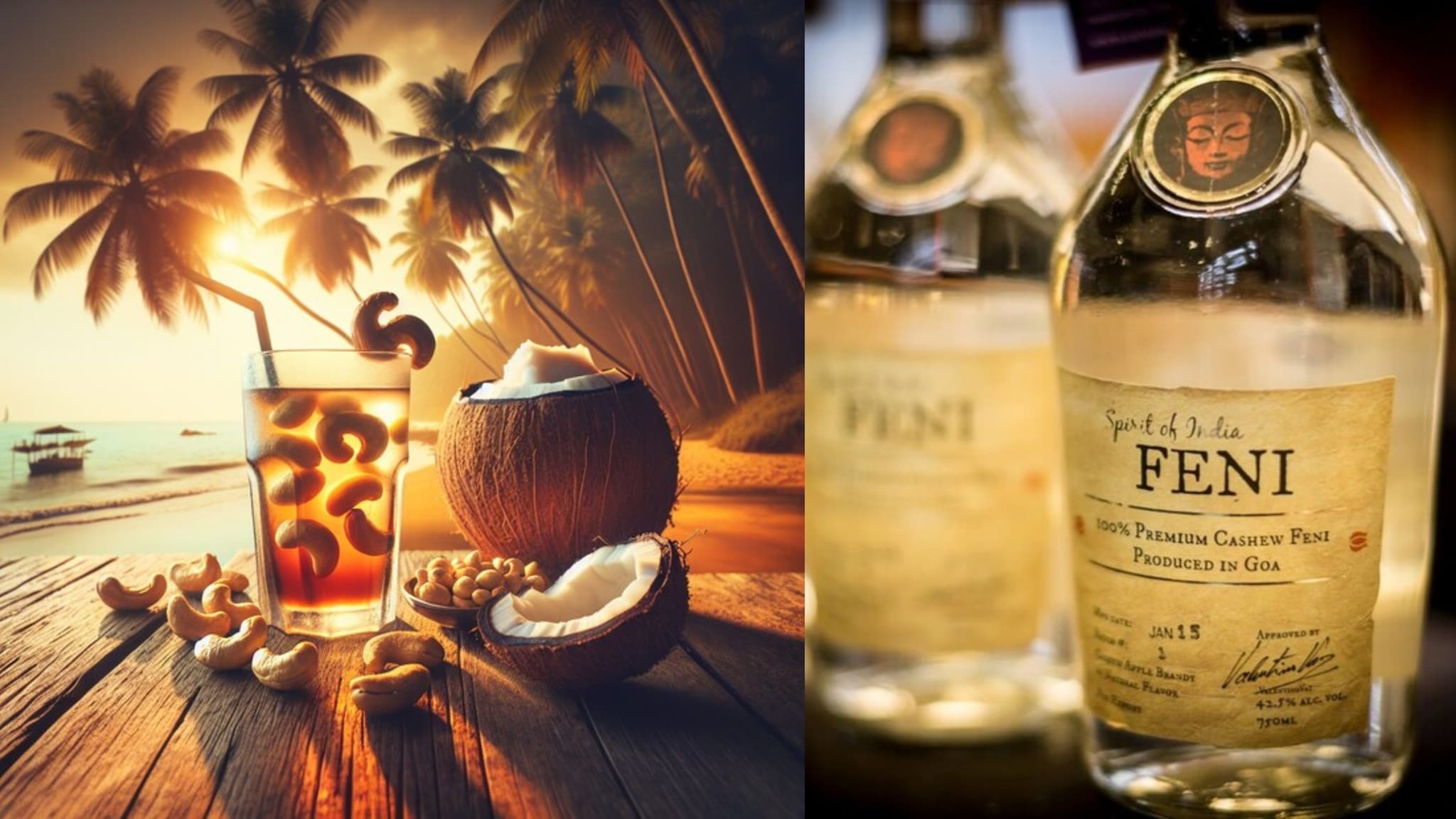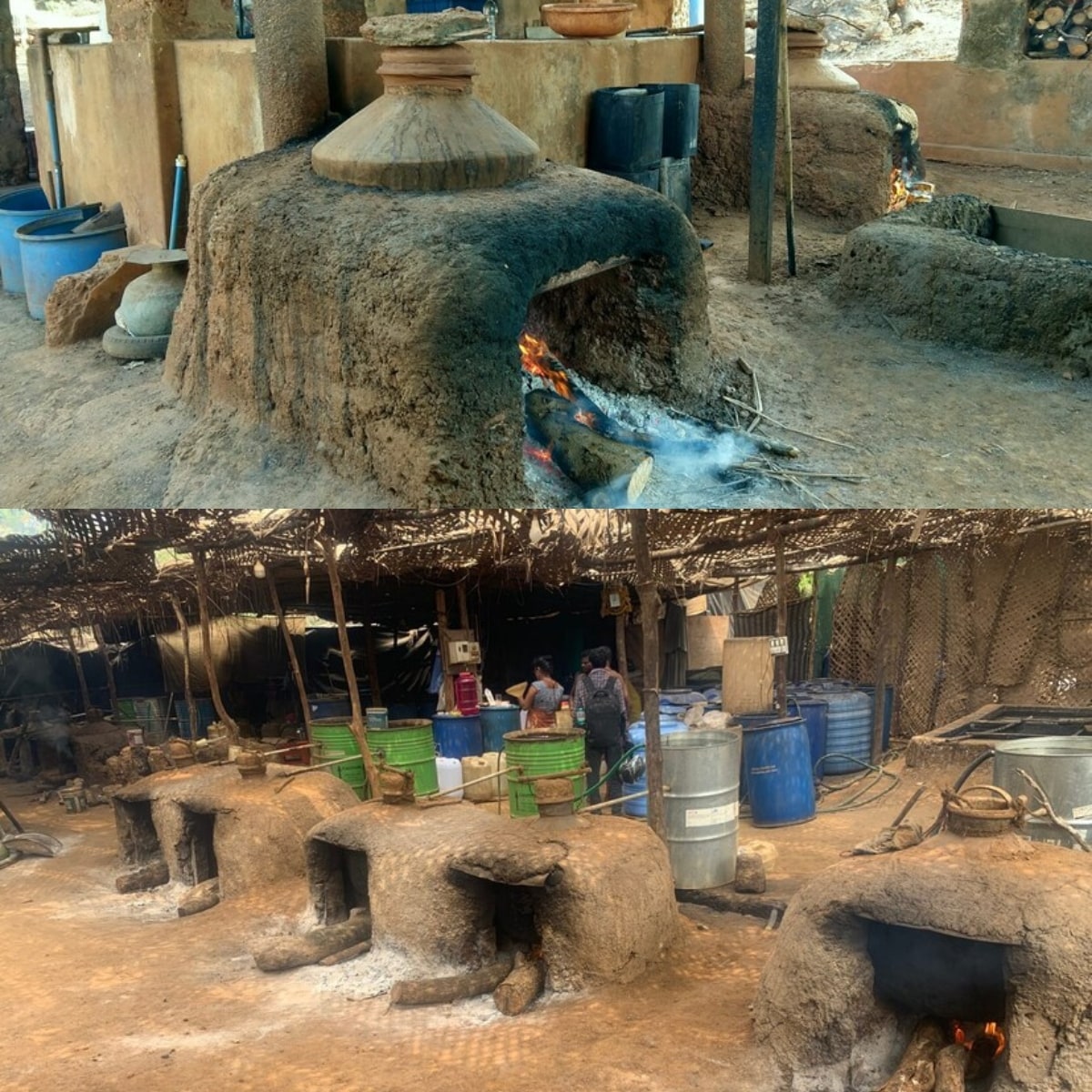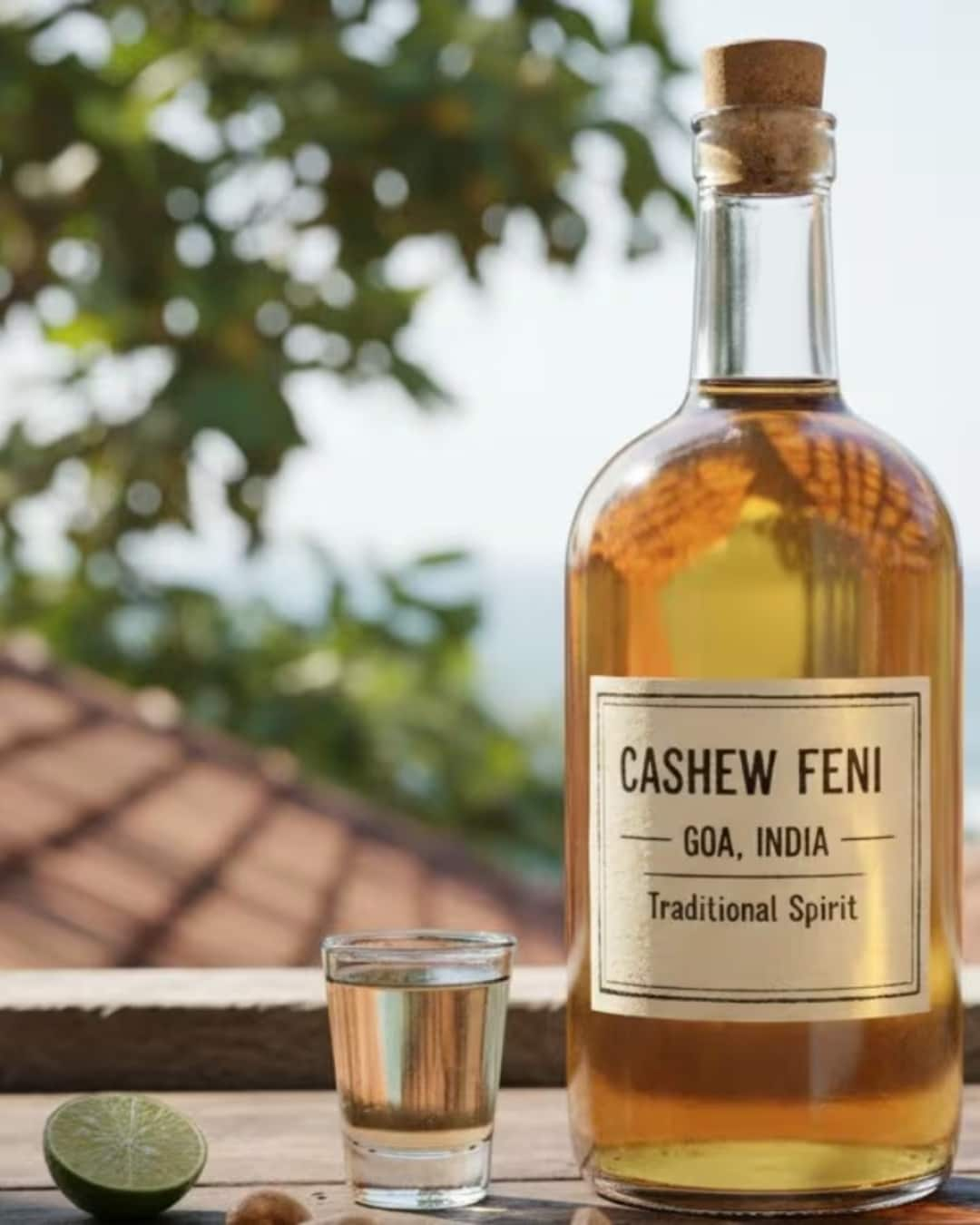Beyond its golden beaches, vibrant nightlife, historic churches, and delectable cuisine, Goa is renowned for its traditional liquor, Feni. Celebrated for its unique aroma and strong taste, Feni is far
more than just an alcoholic beverage; it is an integral part of Goan culture and heritage.
Much like Darjeeling is synonymous with tea, Kolhapur with slippers, Agra with petha, and Mathura with peda, Goa is synonymous with Feni. Though technically classified as a local liquor or toddy, Feni occupies a far higher cultural status, with a proud history spanning over 500 years.
Feni: Goa’s Iconic Traditional Spirit
What makes Feni especially fascinating is its traditional preparation method, still maintained by a few select families in Goa.
Made from fermented cashew juice, Feni contains no artificial or chemical flavours, making it safe to drink. Its name derives from the Sanskrit word ‘Fena‘, meaning foam, inspired by the light bubbles that form when the drink is poured or shaken.

Historically, Feni has been part of Goan life for centuries, and unlike many other liquors, it is known not to cause hangovers.
Origins And Varieties
The Portuguese introduced the first cashew trees to Goa around 500 years ago, although Feni was originally made from coconut, which was abundant locally.
Today, Goa is known for two main types of Feni: coconut Feni and cashew Feni. Early records, such as the diary of Dutch trader Jan Huygen van Linschoten in 1584, mention coconut Feni, suggesting it predated cashew Feni.

Cashew Feni quickly became popular, and the drink remains a symbol of Goan identity, enjoyed in festivals, music, art, and daily life.
Health And Heritage
Traditionally, Feni infused with ginger and cumin was used to treat ailments such as stomach pain, body aches, and joint pain. Today, cashew or coconut Feni dominates the market.
The first distillation of cashew apple juice produces Urrak, a seasonal drink with 25-30% alcohol, enjoyed from mid-March to April. Subsequent distillations yield Kazulo, a highly alcoholic variant, and finally, Feni itself, containing 43-45% alcohol.
Feni has earned a Geographical Indication (GI) tag in 2009 and was declared a heritage drink by the Goa government in 2016.
Traditional Production Process
Feni is made through a meticulous process: cashew fruits are hand-crushed on a basin-like rock atop a hill, and the juice is collected in clay or copper pots buried for fermentation. The juice is then boiled over a wood fire and distilled three times. The resulting liquor is aromatic, fruity, and naturally strong, with no artificial additives.

Around 4,000 microbreweries in Goa continue this craft, maintaining both quality and tradition.
Cultural Significance And Modern Recognition
Feni is more than a drink; it is woven into Goan daily life and tradition. Moderate consumption is believed to warm the body, aid the respiratory system, and assist digestion.
Today, Feni is exported internationally, though it remains primarily sold within Goa due to local excise laws.

Its growing popularity among tourists and support from new-generation producers have elevated Feni to its rightful place as a recognised heritage spirit, akin to Champagne in France or Sake in Japan.
With its rich history, unique flavour, and cultural importance, Feni has firmly established itself as a symbol of Goa, a beverage that reflects the state’s spirit, tradition, and enduring charm.




/images/ppid_59c68470-image-176361755901816353.webp)







/images/ppid_59c68470-image-176346005335345911.webp)

